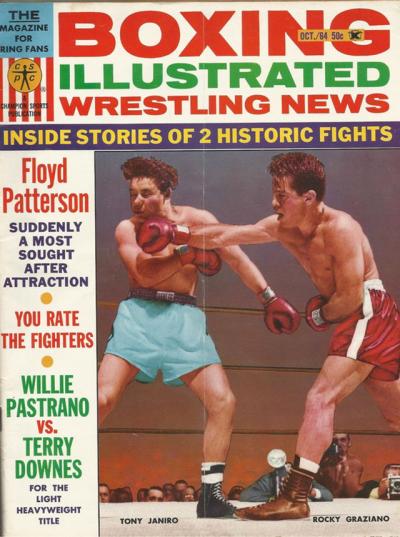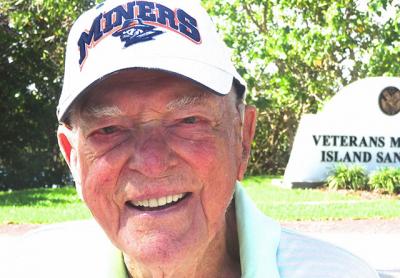The Online Rental Game
The Online Rental Game
Like so many homeowners in Montauk, under the seductive spell of commerce (a.k.a. making a buck), I had designs to rent my one-bedroom condo last summer. Perched on a high hill overlooking the hamlet and the Atlantic Ocean, with great views out all windows, this baby would move, and I wanted in on the seemingly booming online rental game that others were exploiting.
My asking price was $15,000, Memorial Day to Labor Day — granted, an outrageously inflated price for 650 square feet, compared to 15 years ago when Montauk was a working-class family destination and $100-a-night rooms were the norm for the summer. If you’re not going the route of a legitimate agent, there are three main venues: Airbnb, HomeAway, and a little thing called Facebook. God forbid Amazon delves into real estate.
I was intrigued by the raving success other owners were apparently having on Airbnb and HomeAway. Many were fetching close to 70 grand for a modest ranch house on cinder blocks (Montauk is not known for its architecture). I’ve liked the online platforms ever since they humbled the high-end hotels in the cities. Remember how a single glance at one of the those hotel telephones ended in $95 on your bill, and a soda from the mini fridge cost more than a gram of coke?
I was aware that the online platforms had obstacles, and I had heard the horror stories, renters partying and charging admission, for example, subdividing rooms with Sheetrock or plywood then subletting to other tenants. Places basically being destroyed. I knew that Montauk was now a party destination, and my condo board would throw me out if I tried to cater to rabble-rousers. It was also a family spot where nice people worked, and therefore I did not want to disrupt the tranquillity with coked-up stockbrokers. For this reason the Town of East Hampton was cracking down on temporary rentals. I could be fined.
I started with Facebook. In the beginning, I had strict criteria for potential candidates: Must be over 30 (no college kids), nonsmokers, married, loads of references, and good credit. Golfer types, people who occasionally indulged in a couple of glasses of wine at the Harvest as opposed to partying at the Surf Lodge. Oh, and no chefs. (I had read Anthony Bourdain’s “Kitchen Confidential.”) They are absolute animals.
But as the summer drew closer, maybe because of the flood of inventory, I hadn’t secured a single deposit or landed so much as a prospect, so I relaxed my criteria: “First person with $12K gets it! No background check necessary! No one denied!” I was like a 40-year-old ex-model on Match.com. I was willing to settle and couldn’t have cared less if they roasted a pig in the hallway. I wanted the money.
I posted pictures of my condo with some attractive copy — “Happy sun-drenched apartment,” “Bike to the beach” — hoping to find someone old, stable, and rich.
Ah, the enigma that is Facebook: One part wholesome sharing of news and pictures, one part entertaining videos, a big part sticking it in everyone’s face. I always feel somewhat deflated after viewing it. No one wants to see a picture of a happy family skiing in Vail over the holidays — no one except maybe the people in the picture — or how their daughter landed a gold medal in fencing at Yale, while you’re struggling to get your daughter into her third rehab. Personally, I like the sad posts, the worse the story the better, like seeing a guy in a cast or after a terrible operation, hashtag “rough road ahead.”
Despite my 2,000 friends, only a woman named Anna bit on my Facebook offer. We had been friends in Manhattan 25 years ago, and she was, by my recollection, a very kind person who once let me stay at her house for no charge for a few weeks. Through no fault of her own, Anna had fallen on hard times. She had some health issue, lupus or something, so she did not work and had apparently left the real world and become a Facebook person. She walked among us, but she was not one of us, since her world consisted of briefly stimulating but ultimately unfulfilling and boring cybercommunication and attempts to get her friends involved in playing Candy Crush Saga.
Then I saw her comment under my rental ad: “Hey, Jeff, if you don’t rent, my husband, Michael, and I would love to come out for a weekend. Love you! We will pay you, of course!”
I responded affirmatively — bear in mind this was February, so I could afford to make all the empty gestures I wanted. “Of course you can come!”
A month went by, and I would post again: “Looking to rent luxury apartment in MTK.” No response. Although Anna would comment cheekily, “We’re coming in June, Jeff, don’t worry.”
It was March, so of course I wrote, “Can’t wait!”
Time passed. May arrived. I posted again. Anna could clearly see that I had not rented the place, so they traveled overnight from southern Jersey to avoid the Hamptons traffic. I made plans to take the husband fishing the next day.
Condos in Montauk can get tight in June, and there are rules: parking passes, signing in at the facilities and pool, and so on. There is an understanding that in tight quarters or in a shared space guests try to stay as inconspicuous and courteous as possible. Have a blast but no drama, please.
Enter Anna at 5 a.m. with her stick-in-the-mud husband.
Anna did not drink. I was to find out later, however, that she was on high doses of antidepressants and Kpin (a valium cocktail). Nonetheless, Anna appeared to be drunk. Her husband and I left for the boat, and Anna somehow instantly got into an altercation with the pleasant security guard over being asked for proof that she was a guest, ripping him a new one, going by the complaint report, and bellowing my name to anyone who would listen, I’m sure.
To top it off, while I was out fishing with her painfully quiet husband, Anna apparently got into several other confrontations: at the pool, on the shuttle to the beach, with the housekeepers. For each of these I got a call from the manager, a lovely woman with a sense of humor, thank God.
Now for the sake of the story and candor, I’ll tell you an embarrassing tidbit: I’m 51 years old and my mom had helped buy me the condo. The office still had her phone number, so at 6 p.m., during a dinner out with my guests, I checked my messages and found one from her: The office had called about the commotion and would I try to be careful with the people I brought to the place and was I drinking again?
I was indignant. “My mother just called. What the hell went on today at the condo?”
Using Airbnb and HomeAway, finally, in late June, I started to get bites online.
I got a call from a Boston banker. His family has had a beach house here for years. He sounded like an old WASP, which seemed good. He told me that he would use my place only for family “spillover.” Over the course of the conversations, subtle at first, I became aware that this man had one agenda: to find a place for his 18 and 19-year-old daughters to stay for the summer. He explained that they were hard-working girls, with 4.0 averages, who would be waitressing at the Surf Lodge and were there to work, not party.
Now, the guy may have been right, but I don’t have such an expansive imagination. I know what I was like at 18 and simply could not take the chance of a bunch of teenagers having a keg party in my small condo.
It was a tough spot. There was no easy out. I told him that the condo board would not let me rent to people under 25, and he countered that that was discrimination. I absorbed some nasty texts and moved on.
Both Airbnb and HomeAway are specific and demanding and make you really kiss their butts. If you’re not getting good reviews, they threaten to drop your ranking so you get less exposure to prospective renters, or if you’re booking they threaten to totally drop you and do. Hypersensitive, they will accuse you of cutting them out.
Therefore, everyone who has a property on these platforms has his head in his cellphone the entire summer, desperately trying to meet the criteria and get his property placed ahead of the formidable competition. Answering the smallest inquiries from prospective renters consumes all your time. I once took a friend fishing and half the time she was on the phone, screaming at “agents” as to why her listing was down at the height of the season.
Here is what I know:
If you’re not computer literate, you’re not going to have an effective listing. Pictures have to be cropped and edited before uploading, etc.
Expect to be lowballed. But that’s not the worst part. If you don’t know how to modify your price, you get browbeaten by management and your ranking drops considerably.
If you receive one bad report, your offering will be buried. They will always take the renter’s side, in my experience, and you will get a 1099.
God forbid you double book, you will be banished.
To make a long story short, from my personal experience with these online rental sites and Facebook, I would suggest going with traditional real estate agents, who have all but given up on the rental market.
Jeff Nichols’s book “Trainwreck: My Life as an Idiot” was made into the movie “American Loser,” released by Lionsgate.



